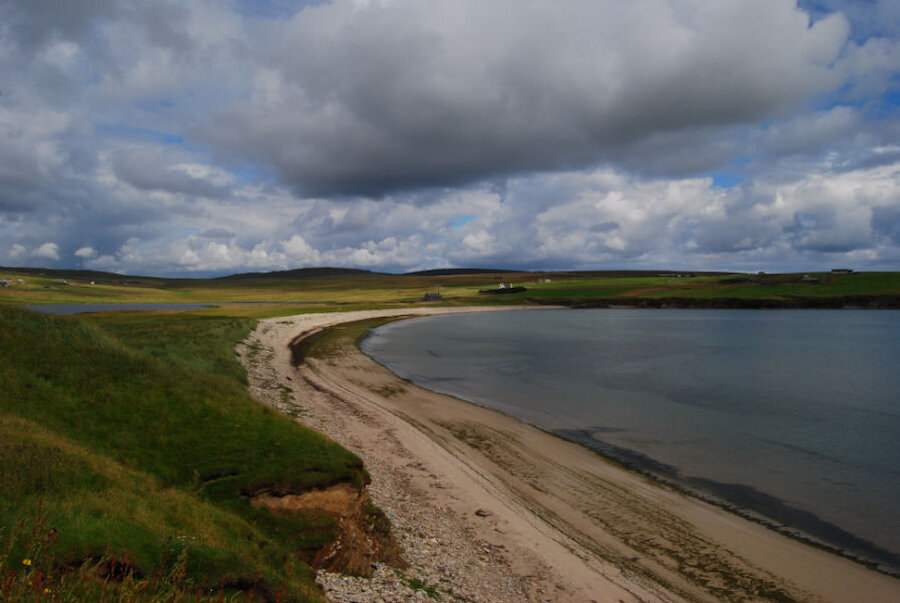Each month, we look at a different part of Shetland to see what it has to offer as a place to live and this time the spotlight’s on Fetlar.
Fetlar lies towards the north of Shetland, to the east of the island of Yell and to the south of Unst. It’s Shetland’s fourth largest island and is roughly five miles from east to west and up to three miles wide.
The island has long been known as ‘the garden of Shetland’ and, towards the south, the land is very fertile. The north, most of which is a nature reserve, is covered by grass and heather moorland; Snowy Owls, normally found farther north, bred here successfully from 1967 to 1975. The coastline is mostly formed of low cliffs but there’s a glorious beach at Tresta. Even without the owls, Fetlar is a must-visit for bird-watchers. The star turn is the beautiful little Red-necked Phalarope and this is easily the best place to see it in Britain, but there are Whimbrels, Red-throated Divers and much else besides.
Fetlar clearly appealed to the earliest settlers. A long, prehistoric dyke divides the island in two, and there are many other sites of archaeological interest; the island featured some years ago in Channel 4’s Time Team and you can watch the episode online. Later developments included two large mansions, at Brough Lodge and Leagarth. Brough Lodge is gradually being restored; if sufficient funding can be obtained, the aim is to create high-quality accommodation where visitors can learn about Shetland’s heritage, particularly knitwear and music.
In the early 19th century, the population peaked at around 860, but clearances to make way for sheep had a dramatic impact. A steady decline continued through much of the 20th century; at one point fewer than 50 residents remained.
Today, things are looking up. A local organisation, Fetlar Developments Ltd, has produced a plan for expansion and the decline has been reversed. Around 80 people live on Fetlar and several younger families have moved in. The island has a public hall, very much the social hub, and there is a primary school and a shop. There are several daily car ferries to Yell and Unst, operating from a new harbour that also provides space for fishing and leisure craft. An excellent website offers lots of information about the island, some of it aimed at people who might want to move there.
Fetlar is one of the quieter and more remote corners of Shetland. It will appeal to those seeking a gentler pace of life in beautiful surroundings, with some exceptional wildlife on the doorstep. However, there are opportunities to get involved in agriculture, inshore fishing, crafts or catering to visitors – perhaps, for the multi-skilled, all of these!

